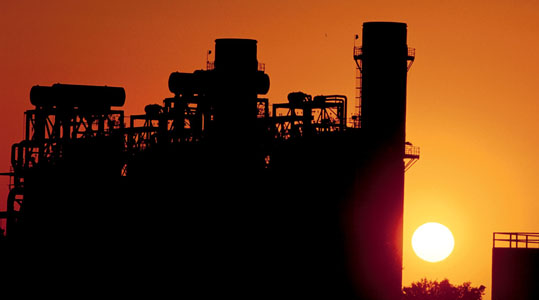A few months ago, this column focused on once-through cooling, a harmful technology in use at three Bay Area power plants.

By Sejal Choksi, Baykeeper and Program Director
Published: July, 2009
A few months ago, this column focused on once-through cooling, a harmful technology in use at three Bay Area power plants. Once-through cooling plants kill fish and marine life as they pull in Bay water to cool heated machinery. In response, we received this inquiry:
“My husband and I are supporters of Baykeeper. We enjoyed your informative article on Local Power Plants in the April 2009 issue of Bay Crossings but felt that an important piece of information was missing: What are the alternatives to once-through cooling? What are their relative positives and negatives? Where else are the alternatives being used? Your article got us very interested in this important topic.”
We greatly appreciate the inquiry and hope that this response answers lingering questions on this topic.
Three power plants along the margins of San Francisco Bay use once-through cooling. This process pulls large amounts of Bay water in to cool power plant turbines and then releases the heated water back into the environment, upsetting the sensitive temperature balance in the Bay ecosystem. Once-through cooling kills large numbers of fish and wildlife that get sucked into power plant turbines and trapped by the force of rushing water against intake screens. This type of cooling process is an outdated technology that was implemented 30 to 40 years ago when coastal power plants were built. Given the advanced age of these plants—and for some of them, their limited contribution to Bay Area energy demands—closing down the plants and switching to renewable energy sources may be the best long-term solution.
In the short term, however, while California’s energy plan includes the three Bay Area power plants that use once-though cooling systems, ‘repowering’ the plants with closed-cycle cooling systems would lessen the environmental burden of these plants. Closed-cycle cooling systems are more energy efficient and less environmentally harmful than once-through cooling systems. This newer technology has been used for years in areas with limited water resources and is now the required technology for newly built power plants. These systems can absorb and dispel the excess heat produced by power plants and also greatly reduce the impact to aquatic and marine ecosystems.
In closed-cycle wet cooling systems, the heat from turbines is absorbed by a small volume of water, part of which is released as vapor from a cooling tower while the rest is recovered for reuse. Wet cooling systems use up to 97% less water than once-through cooling systems. This reduction in water use drastically decreases the number of organisms that are killed in the intake process. Wet cooling systems do have some negative environmental impacts, however: they can emit fine particulate matter into the air, create unattractive plumes of water vapor and release droplets of high-salinity water that drift before settling.
A closed-cycle dry cooling system is another option that uses far less water than once-through cooling, with fewer environmental impacts. The use of dry cooling systems originally began in areas where water resources were very limited, but the increasing cost of water and demand for energy efficiency has made dry cooling systems much more common. These systems use a small volume of water, but the water can be collected for reuse; as a result, dry cooling systems eliminate the need for a continuous intake of cooling water and do not create the same air quality problems as a closed-cycle wet system. Dry cooling systems also dramatically reduce the volume of water discharged into the environment, but the concentrated waste water can contain high levels of pollutants, which raises toxicity concerns. Additionally, dry cooling systems have a higher capital cost and are generally less efficient than wet cooling systems.
Despite some of the environmental trade-offs, closed-cycle cooling systems are a vast improvement over once-through cooling technology. Power plant operators at four California plants in El Segundo, Encina, Humboldt and Contra Costa are already exploring repowering to closed-cycle cooling systems. The Humboldt Bay Repowering Project, for example, will reduce the facility’s water demand from 40,000 to 1.67 gallons per minute and eliminate water withdrawals from Humboldt Bay. Ultimately, California’s energy plan must phase out the use of once-through cooling entirely and increase the percentage of energy provided by renewable sources such as solar and wind. In the short term, however, closed-cycle technology is one of the best options for power plant cooling, both to minimize environmental impacts and to increase energy efficacy.
Above all, San Francisco Baykeeper advocates for environmentally responsible energy policies that don’t harm our local waterways, fish and wildlife. To join Baykeeper and learn more about how to voice your support for ending once-through cooling, visit www.baykeeper.org. If you have comments, questions, or feedback about Baykeeper’s monthly columns, please contact us at info@baykeeper.org.

